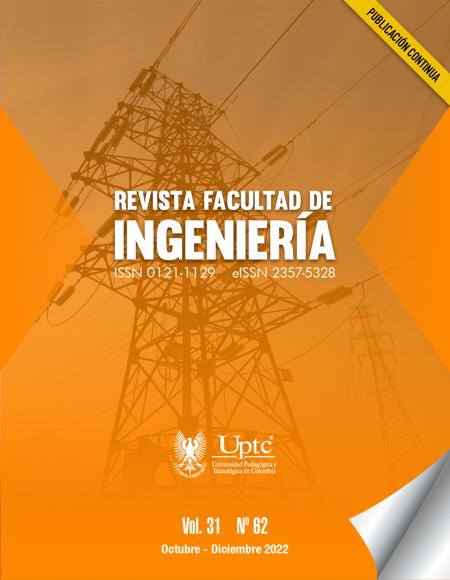Adaptable Data Warehouse Based on the Research Factor of the NAC Institutional Accreditation Model

Abstract
One of the main challenges of higher education institutions is continuously improving educational quality. In Colombia, the National Accreditation Council is in charge of evaluating if an institution provides high-quality education. One of the stages in obtaining recognition of high quality requires submitting a self-assessment report with quantitative data by the institution. This stage is very demanding for the institutions because it requires handling data extracted from various sources. Data warehouses are an alternative solution since they allow information from various sources to be centralized and support decision-making. This article proposes dimensional models adaptable to the availability of information sources for institutions and focuses on investigative processes. The research methodology used is the Iterative Research Pattern, where the problem was observed through the review of related studies and self-assessment reports submitted to the National Accreditation Council by public institutions. Subsequently, the requirements of the model were created and validated by a group of experts in institutional quality accreditation. Then, the solution was developed, and six adaptable dimensional research models were proposed using the MiPymes methodology, which is validated through a focus group of experts in dimensional modeling of data warehouses that considered the degree of adaptability of the models is 100% to the identified requirements.
Keywords
Data Warehouses, Dimensional Modeling, Quality Guidelines, Research, Higher Education
References
- CESU, Acuerdo 03 de 2014, Consejo Nacional de Acreditación (NAC). Colombia, p. 32, 2014.
- J. E. Martínez, S. Tobón, A. Romero, “Problemáticas relacionadas con la acreditación de la calidad de la educación superior en América Latina,” Innovación Educativa, vol. 17, no. 73, pp. 79–96, 2017.
- G. E. Silva Peñafiel, V. M. Zapata Yánez, K. P. Morales Guamán, L. M. Toaquiza Padilla, “Análisis de metodologías para desarrollar Data Warehouse aplicado a la toma de decisiones,” Ciencia Digital, vol. 3, no. 3.4., pp. 397–418, 2019. https://doi.org/10.33262/cienciadigital.v3i3.4..922 DOI: https://doi.org/10.33262/cienciadigital.v3i3.4..922
- IBM, Engineering Lifecycle Management - Data Warehouse, 2022. https://www.ibm.com/docs/en/elm/6.0?topic=overview-data-warehouse
- R. Kimball, M. Ross, The Data Warehouse Toolkit: The Definitive Guide to Dimensional Modeling, 3d ed. John Wiley & Sons, Inc., 2013.
- W. Camilo, L. Mera, Modelo Dimensional para Proyectos y Grupos de Investigación de la VRI de la Universidad del Cauca, Grade Thesis, Universidad del Cauca, 2022.
- E. K. A. Miranda, E. L. I. Suryani, “Implementation of Data Warehouse, Data Mining and Dashboard for Higher Education,” Journal of Theoretical and Applied Information Technology, vol. 64, no. 3, pp. 710–717, 2014.
- F. Di Tria, E. Lefons, F. Tangorra, “Academic Data Warehouse Design Using a Hybrid Methodology,” Computer Science and Information Systems, vol. 12, no. 1, pp. 135–160, 2015. https://doi.org/10.2298/CSIS140325087D DOI: https://doi.org/10.2298/CSIS140325087D
- S. Gorbea Portal, M. Madera Jaramillo, “Diseño de un data warehouse para medir el desarrollo disciplinar en instituciones académicas,” Investigación Bibliotecológica, vol. 31, pp. 161–181, 2017. https://doi.org/10.22201/iibi.0187358xp.2017.72.57828 DOI: https://doi.org/10.22201/iibi.0187358xp.2017.72.57828
- D. Solodovnikova, L. Niedrite, A. Niedritis, “Architecture Enabling Adaptation of Data Integration Processes for a Research Information System,” Foundations of Computing and Decision Sciences, vol. 43, no. 2, pp. 129–149, 2018. https://doi.org/10.1515/fcds-2018-0008 DOI: https://doi.org/10.1515/fcds-2018-0008
- F. Medina, F. Fariña, W. Castillo-Rojas, “Data Mart para obtención de indicadores de productividad académica en una universidad Data Mart to obtain indicators of academic productivity in a university,” Ingeniare. Revista Chilena de Ingeniería, vol. 26, pp. 88–101, 2018. https://doi.org/10.4067/S0718-33052018000500088 DOI: https://doi.org/10.4067/S0718-33052018000500088
- E. V. F. Lapura, J. K. J. Fernandez, M. J. K. Pagatpat, D. D. Dinawanao, “Development of a University Financial Data Warehouse and its Visualization Tool,” Procedia Computer Science, vol. 135, pp. 587–595, 2018. https://doi.org/10.1016/j.procs.2018.08.229 DOI: https://doi.org/10.1016/j.procs.2018.08.229
- M. E. Mendoza, L. Durán, N. Rivera, “MBD 1.0. Metodología de Desarrollo de Bodegas de Datos Para Micro, Pequeñas y Medianas Empresas,” UIS Ingenierías, vol. 9, no. 1, pp. 85–101, 2010.
- K. S. Pratt, “Design Patterns for Research Methods: Iterative Field Research,” AAAI Spring Symposium: Experimental Design for Real, no. 1994, pp. 1–7, 2009
- Congreso Nacional de Colombia, Ley 30 de Diciembre 28 de 1992, 1992. https://www.mineducacion.gov.co/1621/articles-86437_Archivo_pdf.pdf
- B. Kitchenham, P. Brereton, “A systematic review of systematic review process research in software engineering,” Information and Software Technology, vol. 55, no. 12, pp. 2049–2075, 2013. https://doi.org/10.1016/j.infsof.2013.07.010 DOI: https://doi.org/10.1016/j.infsof.2013.07.010
- ISO/IEC, International Standard ISO/IEC 25010, 2011.